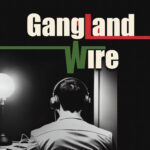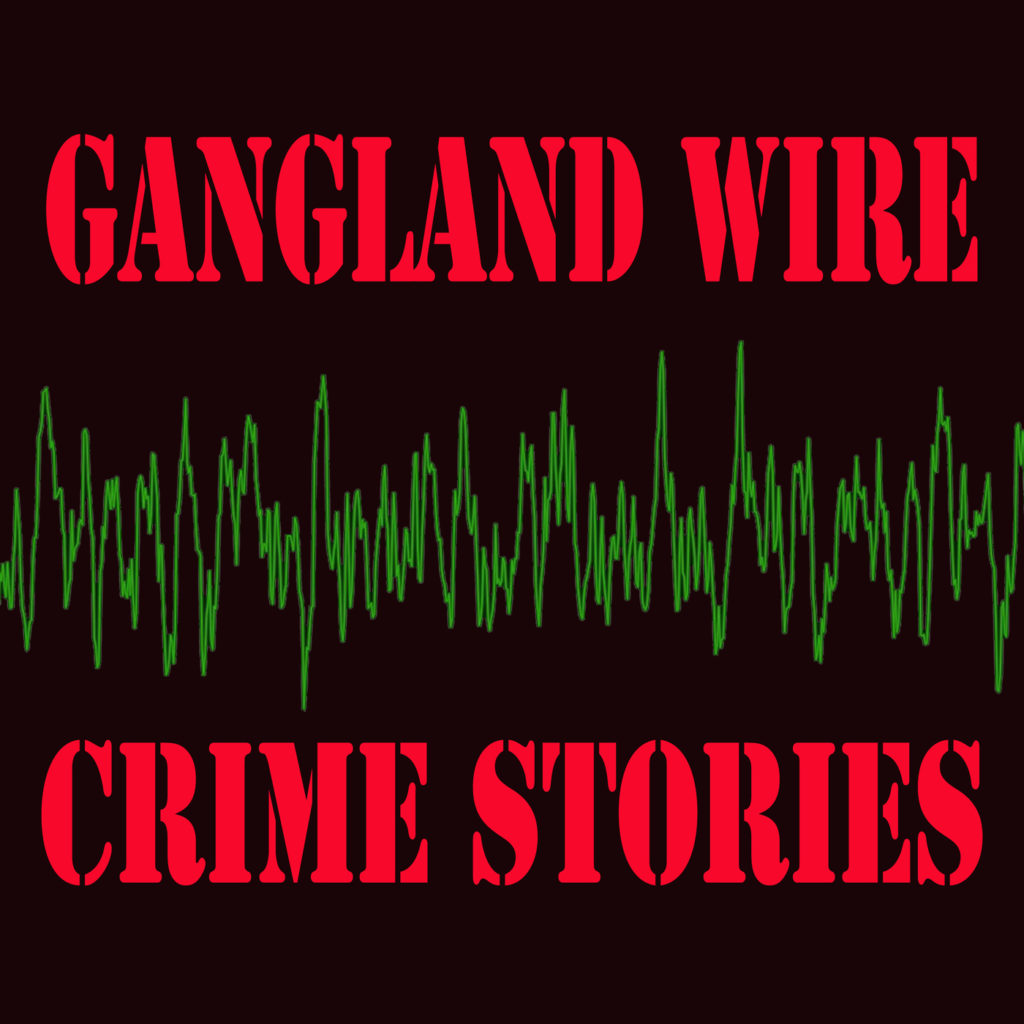Podcast: Play in new window | Download
Subscribe: Apple Podcasts | Android | RSS | More
In Part 2, I discuss what happened during and after this famous raid. Don’t forget to buy me a shot and a beer on your Venmo app at ganglandwire. Edgar Croswell was a detective sergeant in the New York State Police. He had some problems with a resident named Joseph Barbara Sr. Sgt. Croswell had done an extensive background check on Barbara and paid close attention to the Barbara estate. Croswell was in a good place to do this because he worked as an investigator for the State Criminal Investigation Bureau. He worked out of the Vestal substation near Binghamton, New York. Sgt. Creswell had found that Joe Barbara was a suspect in the 1931 murder in Wyoming, Pennsylvania. Months later, Pennsylvania police found a Thompson submachine gun in Joe’s car, which was linked to a gangland shooting in New York City. In 1933, Barbara was again arrested for double murder linked to Mafia activities. Later, in 1933, he was a suspect in a brutal torture-murder of a Scranton, Pennsylvania bootlegger named Albert Wichner.
Sgt. Croswell learned that in the 1940s, Barbara had built an 11-room home with five outbuildings on fifty-three acres of land surrounding it. Barbara formed a small group of mobsters in Wilkes-Barre, Pennsylvania. Joe established a legitimate business running a soft drink bottling plant, and somehow, through some political pressure in Albany, New York, received a district beer distribution license and was also awarded a franchise by the Canada Dry Company to bottle and distribute their products.
Knowing all this background would propel Sgt. Croswell to take the action that led to mob bosses fleeing through the upstate New York woods in their expensive suits and alligator shoes.
On November 13, 1957, an area motel called the State police substation and complained about someone passing a bad check. Sgt. Creswell and his partner, Trooper Vincent Vasisko, drove to the motel late in the afternoon. While they were talking to the owner’s wife, Helen Schroeder, Croswell noticed a cocky young man he knew as Joe Barbara Junior pull up in his Cadillac. The sergeant and the trooper ducked into a small lounge off the office area as Junior entered the motel office. They listened as Barbara Junior booked three double rooms for two nights. He mentioned that his father was hosting a meeting with folks involved in the soft drinks industry. However, he refused to tell the manager the names of the guests or when they were arriving. He paid a deposit and left. Sgt. Croswell smelt something fishy was up, and they left to check out Barbara’s bottling plant to see if anything suspicious was going on there. The plant was closed, and no cars were in the lot. They drove half a mile to the Barbara estate. Here, they sighted four automobiles.
The next day, November 14, 1957, the mafia bosses, their advisers, and bodyguards, approximately one hundred men, met at Joe Barbara’s 53-acre estate in Apalachin, New York, about 200 miles northwest of New York City. Sergeant Croswell thought Barbara may have been involved in some kind of bootlegging operation so he called in treasury agents, Arthur Rustin and Kenneth Brown. They agreed to come from Binghamton, a 30-minute drive, and help. Croswell called his boss and got permission to set up on surveillance of the Joe Barbara estate.
Croswell and his partner Vincent Vasisko and the two treasury agents drove up to McFall Road where the estate was located. They smelled a strong order of meat cooking over an open flame with dozens of men standing around the outdoor barbecue pit. They saw the area in front of Joe Barbara’s garage was filled to capacity with parked cars, expensive cars like Cadillacs, Imperials, Lincolns, and Chryslers. There were so many that they were parked in an adjoining pasture as an overflow lot. The officers quietly exited their cars and entered the field and started writing down license numbers. A small group of men from the barbeque pit area walked away and into this field, they stopped suddenly and looked stunned at the sight of the police officers, then started yelling, retreating towards the house.
Croswell and his men dropped back to public property, and at about 1:00 p.m. Sgt. Croswell ordered a roadblock. He called into the substation and asked for backup. Soon, some twenty state police officers were entering their Plymouth cruisers and roared out of their barracks at Binghampton, Whitney Point, Waverly, and Horseheads and barreled toward Appalchin with lights flashing and sirens blaring.
As the troopers were flying toward the Joe Barbara estate, Sgt. Croswell watched as they saw a stream of men fleeing the Joe Barbara property, rushing across fields and into the woods, then west towards the Apalachin Creek. It’s time to make a tactical decision on the fly with little or no information or legal grounds to articulate.
Some got into their cars and exited not McFall Road. The first vehicle to hit the roadblock was a small truck driven by Bartolo Guccia, a fish merchant from Endicott, NY. He supposedly had been making a delivery at Barbara’s house. The police waived him through. Interestingly enough, Bartolo Guccia, while he has been regarded as a spectator, was more than likely, was part of the discussion. Later, they will learn he was part of the Barbara crime family and well-known to the Federal Bureau of Narcotics. His arrest record dated back to 1916 for just about everything, including murder.
Sgt. Croswell stopped the next car and asked the driver and passenger to leave the vehicle. A driver’s license check found Russel Bufalino, boss of the northeastern Pennsylvania crime family, and New York crime boss Vito Genovese. The men sitting in the back of the Chrysler Imperial were Joseph Ida, Gerardo Catena, and Dominic Oliveto. They claimed they had dropped by to visit their friend Joe Barbara, who had been feeling ill. As Croswell was talking to these men, the first of the state troopers were arriving, pulling their cars onto the side of the road.
Sergeant Croswell made some more tactical decisions. He organized the Troopers into groups and sent them into the woods and countryside to round up anybody who appeared to be coming from the estate. The remaining troopers stopped the ever-growing number of cars driving down the hill out of the estate. They organized them into groups created a convoy and escorted them and their vehicles to the state trooper’s building at 217 Vestal Parkway East.
By late afternoon, the little state troopers building sub-station was packed with the men who had been taken from the cars and other men who were caught fleeing on foot from the Joe Barbara house. They found Kansas City crime boss Nick Civella and Joe Filardo at a nearby train station acting all nonchalant and like they were just waiting for a train. In the end, they had captured 60 men. Sgt. Croswell ordered them one by one to come into his office for interrogation. He ordered them to empty their pockets and give hive their name and an address. Every man there would soon be identified as a professional criminal and connected to a major la Cosa Nostra crime organization. There was an unusual level of blood relatives present at Apalachin-four pairs of brothers, two sets of cousins, and a mixture of uncles, nephews, and in-laws.
Although all of these mobsters would have egg on their faces for a long time over the debacle in upstate New York, the man who really felt the heat was a man named John Montana. He was a businessman from Buffalo and very influential in state politics. He was a city council member and was recently nominated for “Businessman of the Year” by the Erie Club. He owned the most significant taxi-cab business in Buffalo, and he was quietly a capo in the Buffalo Mafia family run by Stefano Magaddino.
Some of the other fancy stories came from men like Vincent Rao of Manhattan, who said he thought he had been invited to a buffet luncheon. Carmine Lombardozzi, a Brooklyn-based hoodlum, confirmed he was going hunting. Asked why he had no gun or hunting gear, he said he was planning to buy it there! Jimmy La Duca, a capo in the Magaddino organization, was apprehended in the woods, where he said he was chasing a deer. Joe Filardo of Kansas City said he was a businessman but refused to say what kind of business. Most everyone said they were paying a sick call on Mr. Barbara and had all coincidentally arrived at the same time. The most original excuse came from James Osticco. He said he had come to the house ‘to fix a pump.’
Later, at a grand jury, a New York City Police Lieut. Thomas Mooney gave his explanation about why the meeting had been called. He alleged this was to be a trial for a man named Lombardozzi, who had been accused of stealing from mob-owned jukeboxes. Other sources claim this trial was because Lombardozzi had raped a woman.
To go to the store or make a donation click here
To rent Gangland Wire, the documentary, click here
To subscribe on iTunes click here, please give me a review and help others find the podcast.


Pingback: Apalachin, NY: 14 November 1957 – Mafia genealogy